Home>Furniture>Living Room Furniture>How To Remove Water Stains From Couch Cushions
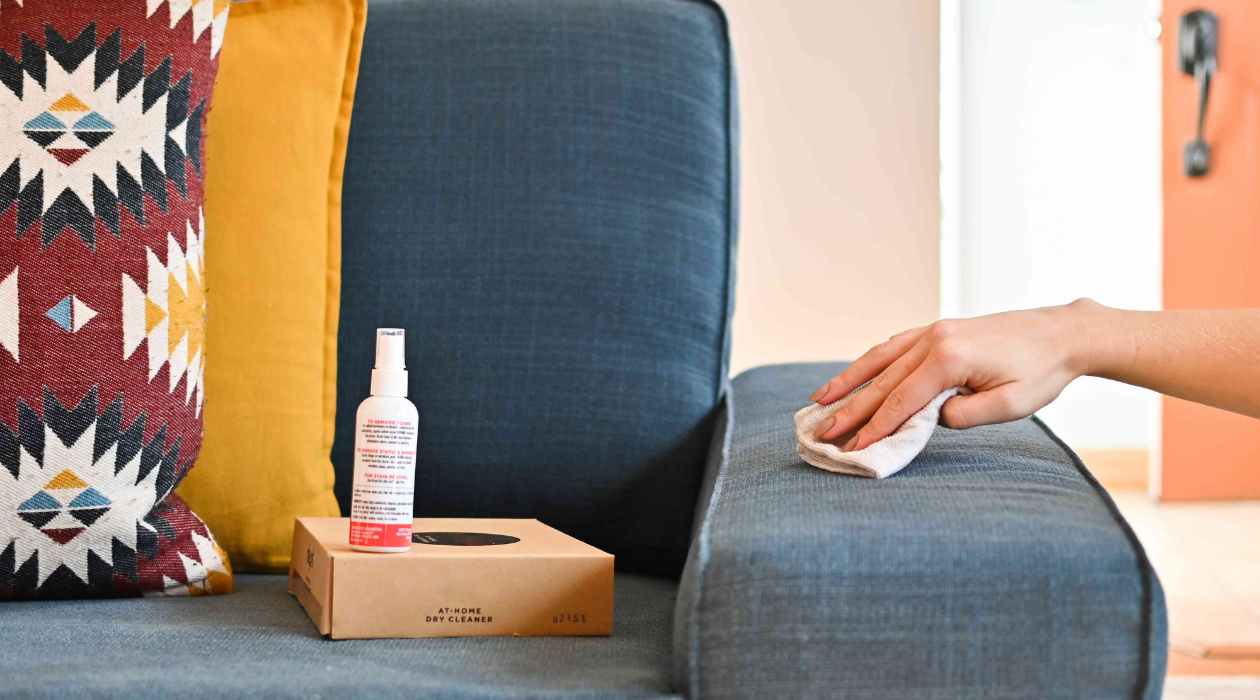

Living Room Furniture
How To Remove Water Stains From Couch Cushions
Modified: March 16, 2024
Learn how to effectively remove water stains from couch cushions and restore the beauty of your living room furniture.
(Many of the links in this article redirect to a specific reviewed product. Your purchase of these products through affiliate links helps to generate commission for Storables.com, at no extra cost. Learn more)
Introduction
Welcome to the ultimate guide on how to remove water stains from couch cushions. Undoubtedly, water stains can be a frustrating and unsightly problem for anyone who cherishes their living room furniture. Whether it’s an accidental spill, a leaky roof, or even wet clothes unknowingly left on the couch, water stains can leave behind stubborn marks that seem impossible to remove.
But fear not! In this article, we will delve into the causes of water stains on couch cushions and provide you with a variety of effective methods to tackle those pesky stains. From natural ingredients like vinegar and lemon juice to household items like rubbing alcohol and club soda, we’ve got you covered with easy-to-follow instructions that will help you restore your couch cushions to their former glory.
Before we jump into the different methods, it’s important to understand why water stains occur in the first place. Water stains on couch cushions can be caused by various factors, including direct contact with water, spills from beverages or cleaning agents, or even excess humidity in the air. These stains can penetrate the fabric or upholstery, making them challenging to remove without proper treatment.
To successfully tackle water stains on your couch cushions, it’s crucial to prepare yourself and gather the necessary supplies. Depending on the method you choose, you may need items such as vinegar, baking soda, dish soap, warm water, a steam cleaner, fabric stain remover, rubbing alcohol, hydrogen peroxide, lemon juice, salt, or club soda. Having these supplies on hand will ensure that you can immediately address any water stains that may arise.
Now that you’re ready to bid farewell to those water stains, let’s dive into each method in detail. Remember, different methods may work better on specific types of fabric or upholstery, so feel free to experiment and find the one that works best for you. With a little patience and determination, you can restore your couch cushions to their original pristine condition.
Key Takeaways:
- Say goodbye to water stains on your couch cushions with natural remedies like vinegar and baking soda, or household items such as dish soap and rubbing alcohol. Restore your cushions to their former glory with ease!
- Prevent water stains by using protective covers, addressing spills promptly, and implementing regular maintenance. Enjoy a fresh and inviting living room with couch cushions that are free from stubborn water stains.
Read more: How To Remove Stains From Couch Cushions
Understanding the Cause of Water Stains on Couch Cushions
Before we proceed with the methods to remove water stains from couch cushions, it’s essential to understand the underlying causes. Knowing why water stains occur can help prevent future stains and guide you in choosing the most effective stain removal method.
Water stains on couch cushions can be caused by various factors. Here are some common culprits:
- Direct contact with water: The most apparent cause of water stains is when the couch cushion comes into direct contact with water. This can happen when you spill a glass of water or any other liquid on the cushion.
- Beverage spills: Accidental spills of beverages like coffee, tea, juice, or soda can leave behind stubborn water stains on couch cushions. These stains can be more challenging to remove due to the pigment and other additives present in the drinks.
- Cleaning agents: Sometimes, using the wrong cleaning agents or excessive amounts of water during cleaning can lead to water stains on couch cushions. This can happen when you try to remove other stains or dirt and inadvertently end up creating new water stains.
- Moisture and humidity: Excessive moisture in the air or high humidity levels can also contribute to the formation of water stains on couch cushions. This is especially true if the cushions are not adequately dried or exposed to long periods of dampness.
It’s important to note that the severity of water stains may vary based on the type of fabric or upholstery used on your couch cushions. Some fabrics, like microfiber or leather, are more resistant to water stains and easier to clean. However, more delicate fabrics like silk or velvet may require extra care and specific stain removal techniques to avoid damage.
By understanding the causes of water stains, you can take steps to prevent them in the future. Implementing preventive measures such as using protective covers, being mindful of spills, and ensuring proper drying after cleaning can significantly reduce the likelihood of water stains on your couch cushions.
Now that you have a clear understanding of what causes water stains, it’s time to move on to the exciting part – the various methods to remove those stubborn marks. Let’s get started!
Preparing for Stain Removal
Before embarking on the journey to remove water stains from your couch cushions, it’s essential to gather the necessary supplies and prepare the area for stain removal. This preparation will ensure that you have everything you need at your fingertips and create an optimal environment for successful stain removal.
Here are a few steps to follow when preparing for stain removal:
- Gather the supplies: Depending on the method you choose, you may need various supplies. Some common items include vinegar, baking soda, dish soap, warm water, a steam cleaner, fabric stain remover, rubbing alcohol, hydrogen peroxide, lemon juice, salt, and club soda. Check the instructions for your chosen stain removal method and make sure you have all the necessary supplies before you begin.
- Prep the area: Before you start cleaning the water stains on your couch cushions, remove any loose debris or dirt by gently vacuuming the cushions. This will prevent any particles from being pushed deeper into the fabric and potentially creating more stains during the cleaning process.
- Test on an inconspicuous area: It’s always a good idea to test any cleaning solution or stain removal method on a small, inconspicuous area of the cushion first. This will help you determine if the solution is safe to use and whether it causes any unwanted discoloration or damage to the fabric. Wait for the test area to dry completely before proceeding.
- Read and follow instructions: It’s crucial to read and understand the instructions for the stain removal method you choose. Different materials may require different approaches, so make sure you’re following the appropriate instructions for your specific couch cushions. Additionally, pay attention to any safety precautions or warnings mentioned in the instructions.
- Protect the surrounding area: Place a clean towel or plastic sheet beneath the couch cushions to protect the underlying furniture or floor from any potential drips or spills during the stain removal process. This will make cleanup easier and prevent further damage to your living room.
- Be patient: Removing water stains from couch cushions may require multiple attempts and some patience. It’s important to approach the stain removal process calmly and avoid using excessive force or harsh scrubbing, as this can damage the fabric. Take your time and allow the cleaning solution or stain remover to work its magic.
By taking the time to gather the necessary supplies and properly prepare the area, you’ll set the stage for effective stain removal. Now that you’re ready to tackle those water stains, let’s explore various methods to restore your couch cushions to their original beauty.
Method 1: Using Vinegar and Baking Soda
One of the most effective and natural methods for removing water stains from couch cushions is using a combination of vinegar and baking soda. Vinegar is known for its cleaning properties, while baking soda acts as a gentle abrasive to lift stains and eliminate odors.
Follow these steps to use vinegar and baking soda to remove water stains from your couch cushions:
- Blot the stain: Start by blotting the water stain with a clean, absorbent cloth or paper towel to remove any excess moisture. Gently press down on the stain without rubbing, as rubbing can spread the stain further.
- Mix a solution: In a small bowl or spray bottle, mix equal parts white vinegar and water. For more stubborn stains, you can use undiluted vinegar.
- Apply the solution: Dip a clean cloth or sponge into the vinegar solution and gently dab it onto the water stain. Avoid saturating the cushion; aim for a damp rather than wet application.
- Let it sit: Allow the vinegar solution to sit on the stain for a few minutes, giving it time to penetrate and break down the water stain.
- Sprinkle baking soda: After the vinegar solution has had time to work, sprinkle a generous amount of baking soda directly onto the stain. The baking soda will react with the vinegar, creating a bubbling effect that helps lift the stain.
- Gently scrub: Using a soft-bristled brush or scrubbing sponge, gently scrub the baking soda into the stain in a circular motion. Be careful not to scrub too aggressively to avoid damaging the fabric.
- Rinse and dry: Wipe away the excess baking soda with a damp cloth and rinse the area with clean water. Blot the cushion with a dry cloth or towel to remove any remaining moisture.
Repeat these steps if the water stain persists. Vinegar and baking soda are generally safe to use on most fabric types, but it’s always a good idea to test the solution on a small, inconspicuous area first to ensure it doesn’t cause any discoloration or damage.
The vinegar and baking soda method is not only effective in removing water stains but also helps eliminate any lingering odors. Once the cushions are dry, they should be free from water stains and have a fresh, clean scent.
Remember to always follow proper safety precautions when working with cleaning solutions. Avoid mixing vinegar with bleach or ammonia-based products, as this can create harmful fumes. Keep the area well-ventilated during the stain removal process.
Now that you know how to use vinegar and baking soda to remove water stains, let’s move on to method two, which involves using dish soap and warm water.
Method 2: Using Dish Soap and Warm Water
Another effective method to remove water stains from couch cushions is by using dish soap and warm water. Dish soap is designed to break down grease and stains, making it a suitable option for tackling water stains on upholstery or fabric.
Follow these steps to use dish soap and warm water to remove water stains from your couch cushions:
- Blot the stain: Start by blotting the water stain with a clean, absorbent cloth or paper towel to remove any excess moisture. Be sure to blot gently without rubbing, as rubbing can spread the stain further.
- Create a cleaning solution: Fill a small bowl with warm water and add a few drops of mild dish soap. Mix it gently to create a soapy solution.
- Dip and squeeze: Dip a clean cloth or sponge into the soapy solution, then squeeze out any excess liquid. You want the cloth or sponge to be damp but not dripping wet.
- Blot and gently scrub: Starting from the outside of the water stain, gently blot the area with the soapy cloth or sponge. Gradually work your way toward the center of the stain, using gentle circular motions to loosen and lift the stain.
- Rinse and remove soap residue: After you’ve effectively scrubbed the stain, dampen a clean cloth with plain water and gently rinse the area. Blot with a dry cloth or towel to remove excess moisture and soap residue.
- Allow drying: Let the cushion air dry completely. Avoid using a hairdryer or placing the cushion in direct sunlight, as excessive heat can cause shrinkage or fabric damage.
If the water stain persists after the first attempt, repeat the steps as necessary. It’s important to be patient and avoid excessive scrubbing, as this can damage the fabric or upholstery.
Remember to test the cleaning solution on a small, inconspicuous area of the cushion before applying it to the entire stain. This test will help ensure that the soap does not cause any adverse reactions or discoloration.
In addition, using a mild dish soap without any harsh chemicals or perfumes is recommended to minimize the risk of further staining or damage to the fabric.
Now that you know how to use dish soap and warm water to remove water stains, you can confidently move on to the next method. Method three involves using a steam cleaner for deeper stain removal.
Read more: How To Remove Dog Hair From Couch Cushions
Method 3: Using a Steam Cleaner
If you’re dealing with stubborn water stains on your couch cushions, using a steam cleaner can be an effective solution. Steam cleaners utilize high-temperature steam to penetrate deep into the fabric and remove dirt, stains, and odors.
Follow these steps to use a steam cleaner to remove water stains from your couch cushions:
- Read the instruction manual: Before using a steam cleaner, familiarize yourself with the manufacturer’s instructions to ensure you understand how to operate the machine correctly and safely.
- Vacuum the cushions: Start by vacuuming the cushions to remove any loose debris or dirt. This step will prevent any particles from being driven deeper into the fabric during the steam cleaning process.
- Prepare the steam cleaner: Fill the steam cleaner with water according to the manufacturer’s instructions. Allow the machine to heat up and generate steam before proceeding.
- Test on an inconspicuous area: Before applying the steam cleaner to the water stains, test it on a small, inconspicuous area of the cushion. This test will ensure that the steam cleaner does not cause any damage or discoloration to the fabric.
- Steam clean the water stains: Once you’ve tested the steam cleaner, proceed to clean the water stains on the couch cushions. Hold the steam cleaner nozzle a few inches away from the stain and move it systematically, working from one end to the other. Apply consistent steam and make sure to cover the entire stain.
- Blot any excess moisture: After steaming the water stains, use a clean cloth or towel to blot any excess moisture from the cushion. This step will prevent the moisture from seeping deeper into the fabric and potentially causing further stains or damage.
- Allow drying: Leave the couch cushions to air dry completely. It’s best to set them in a well-ventilated area and avoid direct sunlight or excessive heat sources, as these can lead to fabric damage or discoloration.
Using a steam cleaner not only helps remove water stains but also sanitizes the fabric, inhibiting the growth of bacteria and reducing any associated odors.
Keep in mind that steam cleaning may not be suitable for all types of fabric or upholstery. It’s important to check the manufacturer’s guidelines and recommendations before using a steam cleaner, especially on delicate fabrics.
Now that you’re familiar with using a steam cleaner for water stain removal, let’s move on to method four, which involves using a fabric stain remover.
Method 4: Using a Fabric Stain Remover
If you’re dealing with stubborn water stains on your couch cushions, using a fabric stain remover can be a highly effective solution. Fabric stain removers are specially formulated to target and remove various types of stains, including water stains.
Follow these steps to use a fabric stain remover to remove water stains from your couch cushions:
- Read the instructions: Before using a fabric stain remover, carefully read and follow the instructions on the product label. Different fabric stain removers may have specific application methods.
- Test on a hidden area: Before applying the stain remover to the noticeable area, test it on a small, inconspicuous part of the cushion. This test will ensure that the stain remover does not cause any discoloration or damage to the fabric.
- Identify the water stain: Locate the specific areas on the couch cushions where the water stains are present. Carefully assess the severity of the stains and apply the fabric stain remover accordingly.
- Apply the stain remover: Spray or apply the fabric stain remover directly onto the water stains. Make sure to saturate the stained area thoroughly and allow the product to penetrate the fabric for the recommended amount of time.
- Blot or scrub: Depending on the instructions provided by the fabric stain remover, gently blot the stain with a clean cloth or sponge to absorb the product and lift the stain. Alternatively, you may need to gently scrub the stain in a circular motion using a soft-bristled brush or sponge.
- Rinse or wipe: After treating the water stains, rinse the affected area with clean water or use a clean, damp cloth to remove any excess stain remover residue. Blot the area with a dry cloth or towel to remove moisture.
- Allow drying: Allow the cushion to air dry completely. Keep it in a well-ventilated area and avoid direct sunlight or heat sources, as they may cause the fabric to shrink or discolor.
It’s important to choose a fabric stain remover that is suitable for the specific type of fabric or upholstery on your couch cushions. Some stain removers are designed for certain fabrics, so be sure to select one that is compatible with your cushions.
If the water stains persist after the first application, you may need to repeat the process or try a different stain remover. Always follow the instructions provided by the manufacturer and exercise caution when using these products on delicate or sensitive fabrics.
Now that you know how to use a fabric stain remover, you’re one step closer to saying goodbye to those stubborn water stains on your couch cushions. But if the fabric stain remover doesn’t do the trick, don’t worry—there are still a few more methods to explore!
Mix equal parts of white vinegar and water in a spray bottle. Spray the solution onto the water stains on the couch cushions and gently blot with a clean cloth. Repeat until the stains are gone, then let the cushions air dry.
Method 5: Using Rubbing Alcohol
If you’re looking for an effective and affordable solution to remove water stains from your couch cushions, rubbing alcohol can be a handy option. Rubbing alcohol, also known as isopropyl alcohol, has excellent cleaning properties and can help dissolve and lift the water stains from the fabric.
Follow these steps to use rubbing alcohol to remove water stains from your couch cushions:
- Blot the stain: Start by blotting the water stain with a clean, absorbent cloth or paper towel to remove any excess moisture. Gently press down on the stain without rubbing, as rubbing can spread the stain further.
- Test on a hidden area: Before applying rubbing alcohol to the noticeable area, test it on a small, inconspicuous part of the cushion to ensure it doesn’t cause any discoloration or damage.
- Apply rubbing alcohol: Moisten a clean cloth or sponge with rubbing alcohol. Gently dab the cloth onto the water stain, ensuring the stained area is thoroughly saturated with the rubbing alcohol. Be cautious not to oversaturate the cushion, as excessive moisture can damage the fabric.
- Blot or sponge: After applying the rubbing alcohol, gently blot the stain with a clean cloth or sponge. This will help lift the stain and absorb the rubbing alcohol along with the dissolved stain particles.
- Repeat as necessary: Depending on the severity of the water stain, you may need to repeat the application of rubbing alcohol and blotting until the stain is completely removed. Be patient and continue the process until the desired result is achieved.
- Allow drying: Once the water stain is removed, leave the cushion to air dry completely. Ensure proper ventilation in the room and avoid direct sunlight or heat sources that could potentially damage the fabric.
Rubbing alcohol is effective in breaking down water stains and evaporating quickly, leaving minimal residue behind. However, it’s crucial to use rubbing alcohol in a well-ventilated area, as the fumes can be strong. Additionally, do not use rubbing alcohol on delicate fabrics or materials that could be damaged by its use.
Remember to always test the rubbing alcohol on an inconspicuous area of the cushion before applying it to the water stains. This test helps ensure that it doesn’t negatively impact the fabric.
With rubbing alcohol, you have a cost-effective and straightforward solution to remove water stains from your couch cushions. But if the water stains persist or you want to explore more methods, don’t worry—we still have a few tricks up our sleeves!
Method 6: Using Hydrogen Peroxide
If you’re dealing with stubborn water stains on your couch cushions, hydrogen peroxide can be a powerful tool to help eliminate those stains. Hydrogen peroxide is a common household item known for its stain-removing properties, making it an excellent option for tackling water stains.
Follow these steps to use hydrogen peroxide to remove water stains from your couch cushions:
- Blot the stain: Start by blotting the water stain with a clean, absorbent cloth or paper towel to remove any excess moisture. Gently press down on the stain without rubbing, as rubbing can spread the stain further.
- Test on a hidden area: Before applying hydrogen peroxide to the noticeable area, test it on a small, inconspicuous part of the cushion to ensure it doesn’t cause any discoloration or damage.
- Dilute the hydrogen peroxide: In a small bowl, dilute the hydrogen peroxide with an equal amount of water. This will help reduce its concentration and minimize the risk of damaging the fabric.
- Apply the solution: Dip a clean cloth or sponge into the diluted hydrogen peroxide solution. Gently dab the cloth onto the water stain, ensuring the stained area is thoroughly saturated. Allow the solution to sit on the stain for a few minutes.
- Blot or sponge: After allowing the hydrogen peroxide solution to work on the stain, gently blot the area with a clean cloth or sponge. This will help lift the stain and remove the hydrogen peroxide along with the dissolved stain particles.
- Repeat as necessary: For persistent water stains, repeat the process of applying the hydrogen peroxide solution and blotting until the stain is effectively removed. Be patient and persistent, as some stains may require multiple attempts.
- Allow drying: Once the water stain is removed, leave the cushion to air dry completely. Ensure proper ventilation and avoid direct sunlight or heat sources that could potentially damage the fabric.
Hydrogen peroxide is a versatile cleaning agent, but it’s important to exercise caution when using it on colored or delicate fabrics, as it may have a bleaching effect. Always test the hydrogen peroxide solution on a small, inconspicuous area of the cushion before applying it to the water stains.
It’s worth mentioning that hydrogen peroxide can also help eliminate any associated odors caused by the water stains. This makes it an effective solution for restoring the freshness of your couch cushions.
Now that you know how to use hydrogen peroxide to remove water stains, let’s move on to method seven, which involves using lemon juice and salt.
Read more: How To Remove Water Stains From Carpet
Method 7: Using Lemon Juice and Salt
When it comes to natural stain-removal remedies, lemon juice and salt are a dynamic duo that can help lift and lighten water stains on couch cushions. Lemon juice acts as a natural bleaching agent, while salt provides gentle abrasion to scrub away the stains.
Follow these steps to use lemon juice and salt to remove water stains from your couch cushions:
- Blot the stain: Start by blotting the water stain with a clean, absorbent cloth or paper towel to remove any excess moisture. Gently press down on the stain without rubbing, as rubbing can spread the stain further.
- Create a paste: In a small bowl, mix a few tablespoons of lemon juice with an equal amount of salt. Stir the mixture until it forms a paste-like consistency.
- Apply the paste: Using a clean cloth or sponge, apply the lemon juice and salt paste onto the water stain. Ensure that the stained area is completely covered with the paste. Let it sit for about 15-20 minutes to allow the paste to work its magic.
- Gently scrub: After the paste has sat on the stain, use a soft-bristled brush or sponge to gently scrub the area in circular motions. This gentle scrubbing action, combined with the lemon juice and salt, will help lift the stain from the fabric.
- Rinse and blot: Once you’ve finished scrubbing, rinse the area with clean water to remove any residual paste. Then, use a clean cloth or towel to blot the cushion and absorb any excess moisture.
- Allow drying: Leave the cushion to air dry completely. Ensure proper ventilation in the room and avoid direct sunlight or heat sources, as they may cause the fabric to shrink or discolor.
Remember to test the lemon juice and salt paste on an inconspicuous area of the cushion before applying it to the water stains. This test will help ensure that the paste doesn’t cause any adverse reactions or discoloration.
It’s worth noting that lemon juice can act as a natural bleaching agent, so it is particularly effective for lighter-colored fabrics. However, it’s important to exercise caution when using this method on darker or more delicate fabrics, as it may cause lightening or discoloration.
Now that you know how to use lemon juice and salt to remove water stains, you’re well-equipped to restore the beauty of your couch cushions. But wait, we’re not done yet! There’s one more method left to explore.
Method 8: Using Club Soda
If you’re dealing with water stains on your couch cushions, you may be surprised to learn that club soda can be an effective and simple solution. Club soda contains carbonation and minerals that can help lift and remove water stains, making it a convenient option for stain removal.
Follow these steps to use club soda to remove water stains from your couch cushions:
- Blot the stain: Start by blotting the water stain with a clean, absorbent cloth or paper towel to remove any excess moisture. Blot gently without rubbing, as rubbing can spread the stain further.
- Pour club soda: Carefully pour club soda directly onto the water stain. Ensure that the stained area is well-saturated with the club soda.
- Gently blot: Using a clean cloth or sponge, gently blot the stained area with the club soda. The carbonation in the club soda will help lift the stain from the fabric.
- Repeat if necessary: If the water stain remains after the first round of club soda treatment, repeat the process by pouring more club soda on the stain and gently blotting.
- Blot and dry: After treating the water stains with club soda, use a clean, dry cloth or towel to blot the cushion and remove any excess moisture.
- Allow drying: Leave the cushion to air dry completely. Ensure proper ventilation in the room, and avoid direct sunlight or heat sources that could potentially damage the fabric.
Club soda works best when tackling fresh water stains as soon as possible. The carbonation and minerals in the soda help to break down the stain, making it easier to remove.
It’s important to note that club soda may not be effective on all types of fabric or on older, set-in water stains. It’s always recommended to test club soda on a small, inconspicuous area of the cushion before applying it to the entire stain.
With club soda, you have a simple and accessible option to remove water stains from your couch cushions. Now that you’re armed with this knowledge, your couch cushions will look refreshed and stain-free in no time.
With eight effective methods to remove water stains from couch cushions, you’re well-equipped to tackle any stubborn stains that may come your way. Remember to choose the method that is best suited for your fabric type and always test on an inconspicuous area before proceeding. With a little patience and the appropriate method, you can restore your couch cushions to their former glory. Enjoy a fresh and clean living room experience!
Additional Tips for Removing Water Stains
When it comes to removing water stains from couch cushions, there are a few additional tips that can help ensure success and minimize the risk of further damage. Consider these tips to enhance the effectiveness of your stain removal efforts:
- Act quickly: The sooner you attend to a water stain, the easier it will be to remove. Promptly blotting the stain and treating it with the appropriate method can prevent it from setting in and becoming more challenging to eliminate.
- Use gentle motions: When applying any cleaning solution or scrubbing the stain, always use gentle motions. Avoid aggressive scrubbing or rubbing, as it can damage the fabric or spread the stain further.
- Work from the outside in: When blotting or applying a cleaning solution, start from the outer edges of the stain and work your way toward the center. This prevents the stain from spreading to unaffected areas.
- Blot, don’t rub: Instead of rubbing the cushion vigorously, opt for blotting with a clean cloth or sponge. Blotting helps to absorb the moisture and lift the stain without pushing it deeper into the fabric.
- Avoid excessive moisture: While it’s essential to apply enough cleaning solution or water to effectively remove the stain, be cautious not to oversaturate the cushion. Excessive moisture can cause the fabric to shrink, warp, or develop water rings.
- Be mindful of fabric compatibility: Different fabrics have varying sensitivities to cleaning solutions and methods. Always check the manufacturer’s guidelines or test the cleaning solution on a hidden area of the cushion to ensure it won’t cause any damage or discoloration.
- Follow product instructions: Whether you’re using a fabric stain remover or a specific cleaning solution, it’s crucial to read and follow the instructions provided by the manufacturer. Each product may have different guidelines and application methods that yield the best results.
- Consider professional cleaning: If your efforts to remove the water stains are unsuccessful or if you’re dealing with delicate or valuable cushions, it may be wise to seek professional upholstery cleaning services. Professional cleaners have the expertise and specialized equipment to effectively treat and remove stubborn stains.
- Regular maintenance: To prevent water stains from occurring in the first place, establish a regular maintenance routine. This can include vacuuming the cushions regularly, addressing spills promptly, and using protective covers or furniture sprays to repel liquids.
Efficiently removing water stains requires a combination of patience, proper technique, and the right cleaning methods. Following these additional tips will help you achieve optimal results while safeguarding the condition of your couch cushions.
Now that you’re armed with these tips, you’re well-prepared to take on any water stains and restore the beauty of your couch cushions. Good luck, and happy stain removal!
Preventing Water Stains on Couch Cushions
While knowing how to effectively remove water stains from couch cushions is essential, taking preventive measures can save you time, effort, and the headache of dealing with stains in the first place. By implementing these preventive strategies, you can minimize the risk of water stains on your couch cushions:
- Use protective covers: Consider using removable, washable covers on your couch cushions. These covers act as a barrier, protecting the cushions from spills, moisture, and stains. They can be easily removed and washed when necessary, keeping your cushions in pristine condition.
- Address spills immediately: Accidents happen, and when they do, it’s important to address spills promptly. Use a clean cloth or paper towel to blot the spill, removing as much liquid as possible before it seeps into the cushion. Avoid rubbing the spill, as this can spread it further.
- Be cautious with liquids: When enjoying beverages on the couch, be mindful of their proximity to the cushions. Use spill-proof containers or cups with lids, whenever possible, to reduce the risk of accidental spills. Consider using coasters to keep drinks stable and prevent condensation from soaking into the cushions.
- Avoid eating on the couch: Eating on the couch can lead to food and liquid spills that are more likely to cause water stains. Designate areas other than the couch for meals and snacks to reduce the chances of stains occurring.
- Regularly clean and maintain: Regular maintenance of your couch cushions can prevent dirt and grime buildup, making it easier to address water stains if they do occur. Vacuum the cushions regularly to remove loose debris and use a fabric freshener or deodorizer to keep them smelling fresh.
- Keep the surrounding area dry: Minimize the risk of water stains by keeping the surrounding environment dry. Be cautious of leaving wet clothes or towels on the couch, as the moisture can transfer to the cushions. Additionally, ensure that there are no leaks or sources of excess humidity in the room.
- Provide proper ventilation: Adequate airflow in the room can help prevent moisture buildup, reducing the chances of water stains. Open windows or use fans to improve ventilation and circulation, particularly in areas prone to dampness or high humidity.
- Follow manufacturer’s guidelines: Different couch cushions may have specific care instructions from the manufacturer. Refer to these guidelines for recommended cleaning methods and products that are safe to use on the specific type of fabric or upholstery. Adhering to these guidelines will help maintain the cushions’ integrity and prevent water stains.
By incorporating these preventive measures into your routine, you can significantly reduce the likelihood of water stains on your couch cushions. Remember, prevention is always easier than stain removal, so it’s worth investing time and effort in protecting your cushions.
Now that you have a range of strategies for preventing water stains, you can enjoy your couch with peace of mind, knowing that your cushions are shielded from potential spills and moisture.
With these preventive measures in place, you can maintain the beauty and longevity of your couch cushions for years to come.
Read more: How To Remove Water Stains From Glassware
Conclusion
Water stains on couch cushions can be frustrating and unsightly, but they don’t have to be permanent. With the right knowledge and techniques, you can effectively remove water stains and restore your cushions to their former glory.
In this comprehensive guide, we explored various methods to remove water stains from couch cushions. From natural remedies like vinegar and baking soda to household items such as dish soap, steam cleaners, fabric stain removers, rubbing alcohol, hydrogen peroxide, lemon juice, salt, and even club soda, you have a range of options to choose from.
Remember to approach stain removal with patience, using gentle motions and avoiding excessive force. Always test any cleaning solutions or methods on an inconspicuous area of the cushion before proceeding.
In addition to the stain removal methods, we provided additional tips for optimizing your stain removal efforts and preventing water stains in the future. By using protective covers, addressing spills promptly, being mindful of liquids near the cushions, and implementing regular maintenance, you can significantly reduce the likelihood of water stains occurring.
With these comprehensive instructions, tips, and preventive measures, you are well-equipped to tackle water stains and maintain the beauty of your couch cushions for years to come.
Remember, accidents happen, and water stains can be stubborn. If you find yourself struggling to remove a particularly stubborn stain or if you have delicate or valuable cushions, consider seeking the assistance of professional upholstery cleaning services.
By following this guide and taking proactive measures, you can enjoy a fresh and inviting living room with couch cushions that are free from water stains.
Now, take the knowledge you’ve gained, choose the method that suits your needs, and get ready to restore your couch cushions to their original splendor.
Frequently Asked Questions about How To Remove Water Stains From Couch Cushions
Was this page helpful?
At Storables.com, we guarantee accurate and reliable information. Our content, validated by Expert Board Contributors, is crafted following stringent Editorial Policies. We're committed to providing you with well-researched, expert-backed insights for all your informational needs.
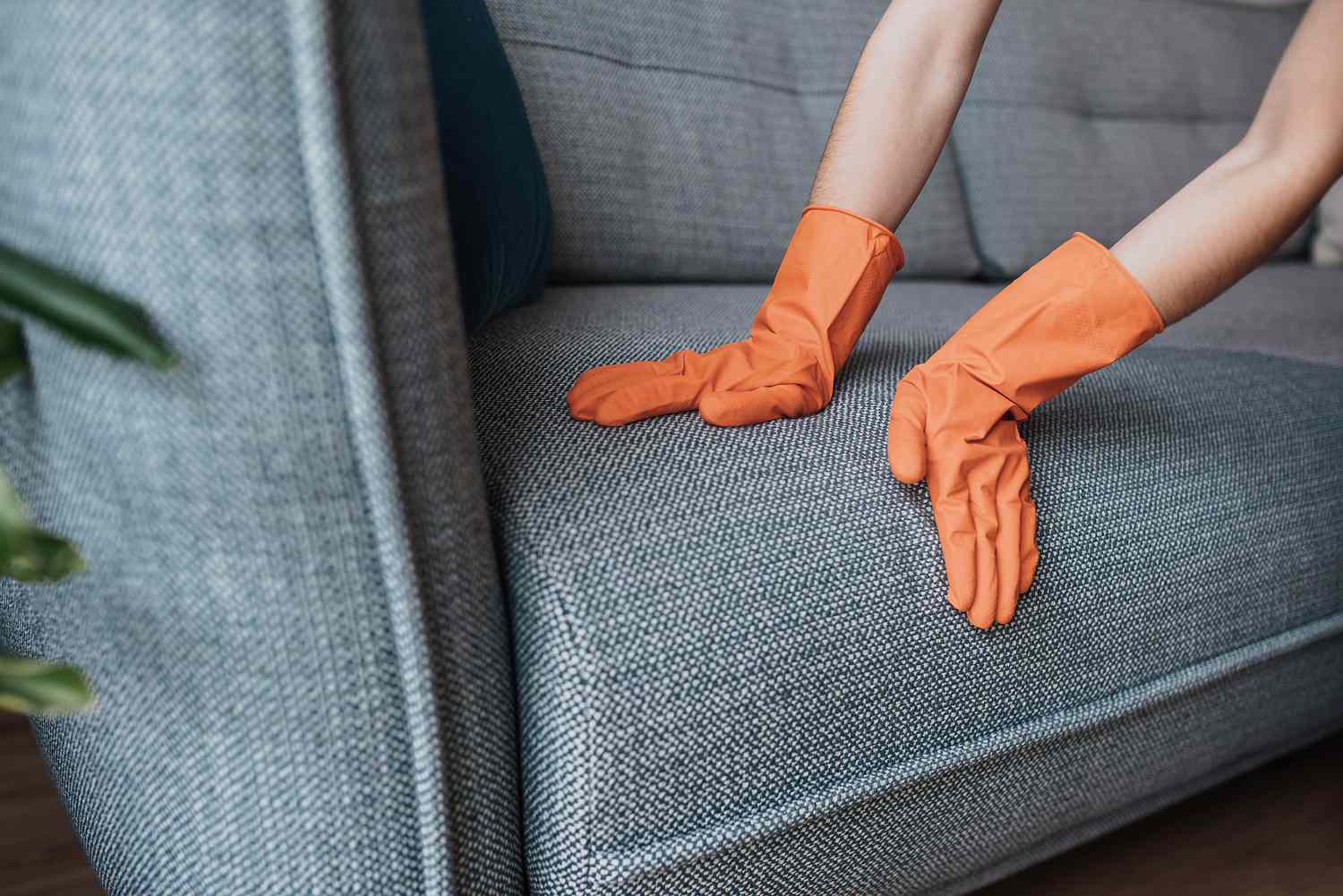
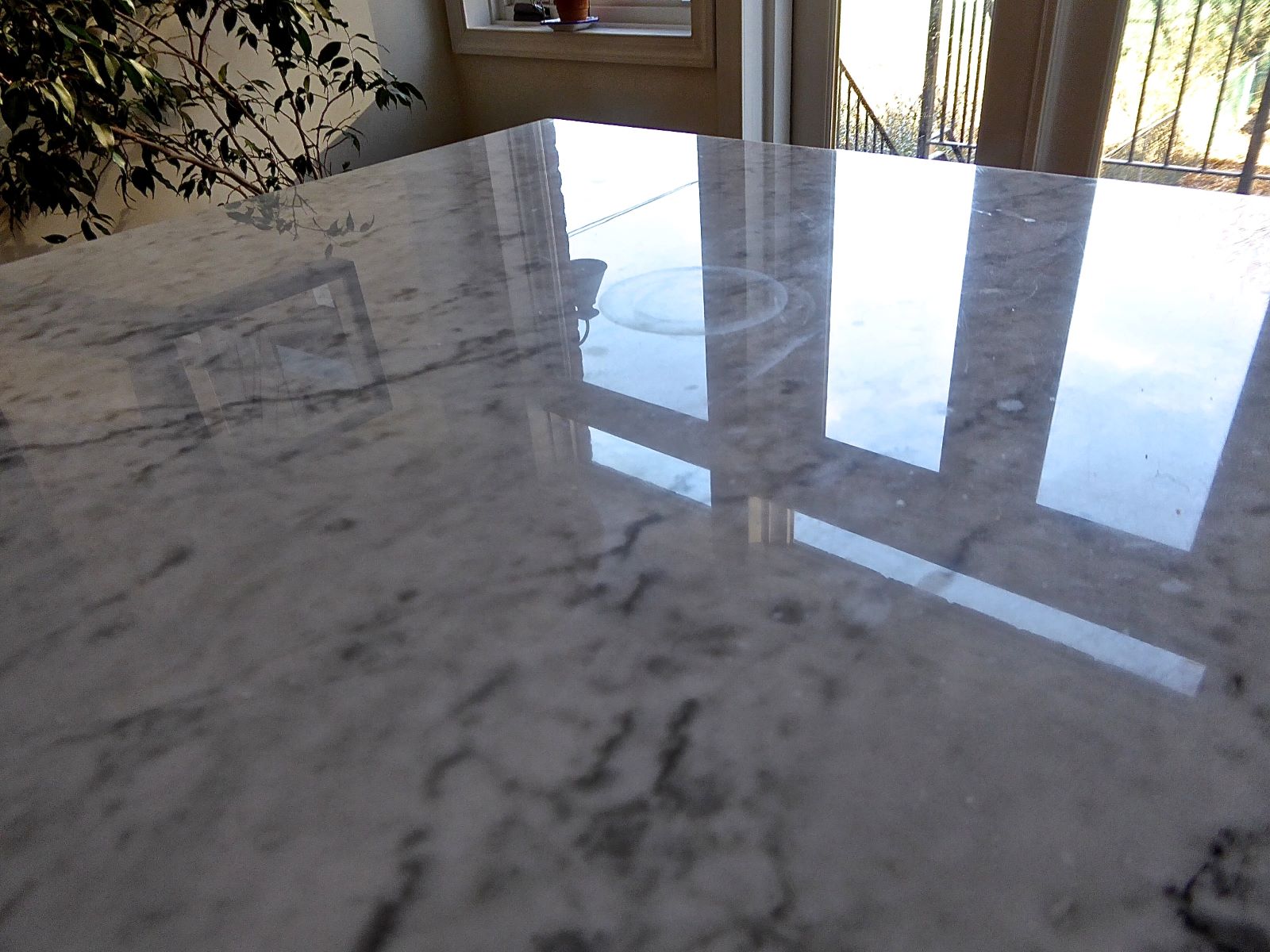
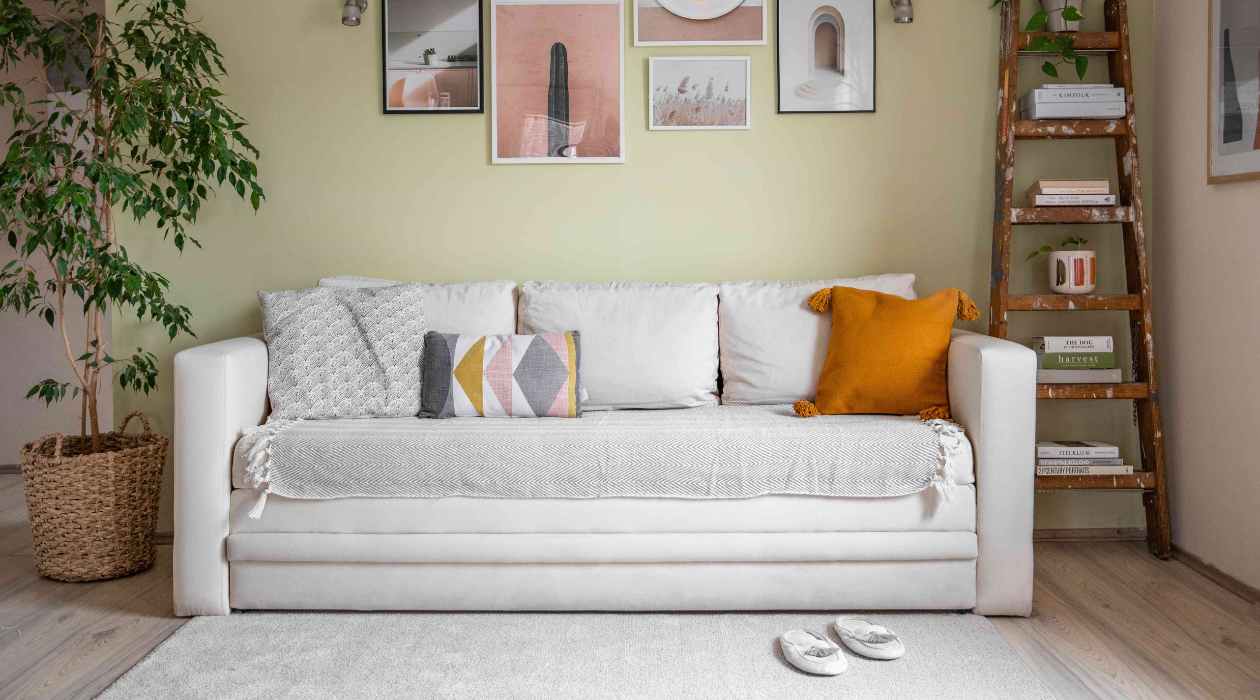
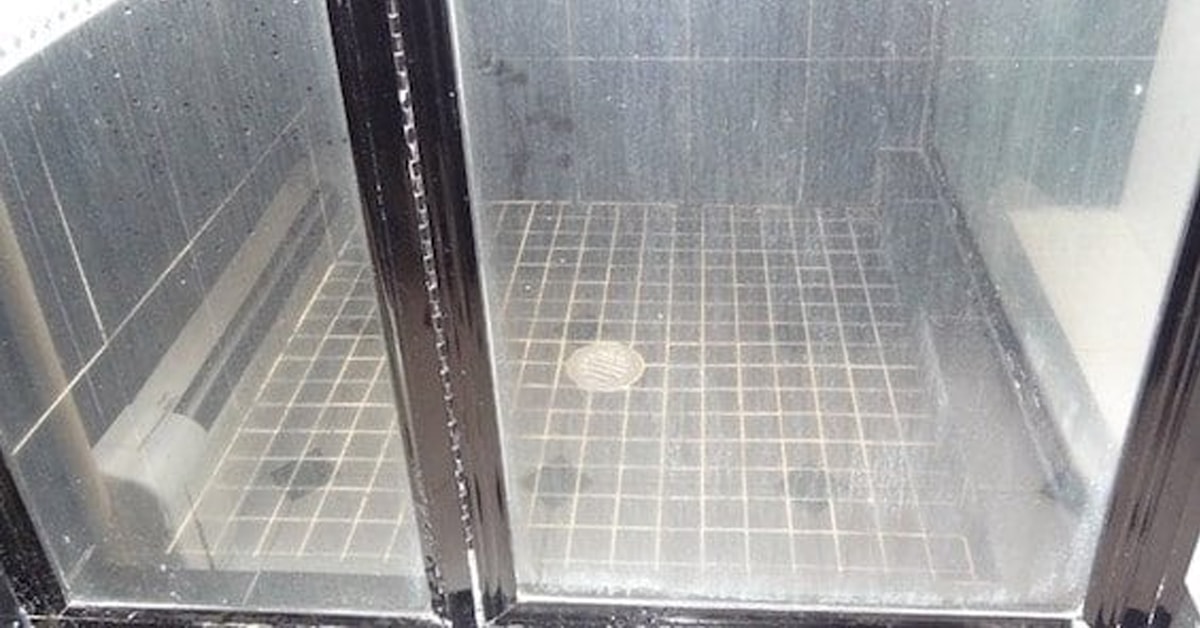
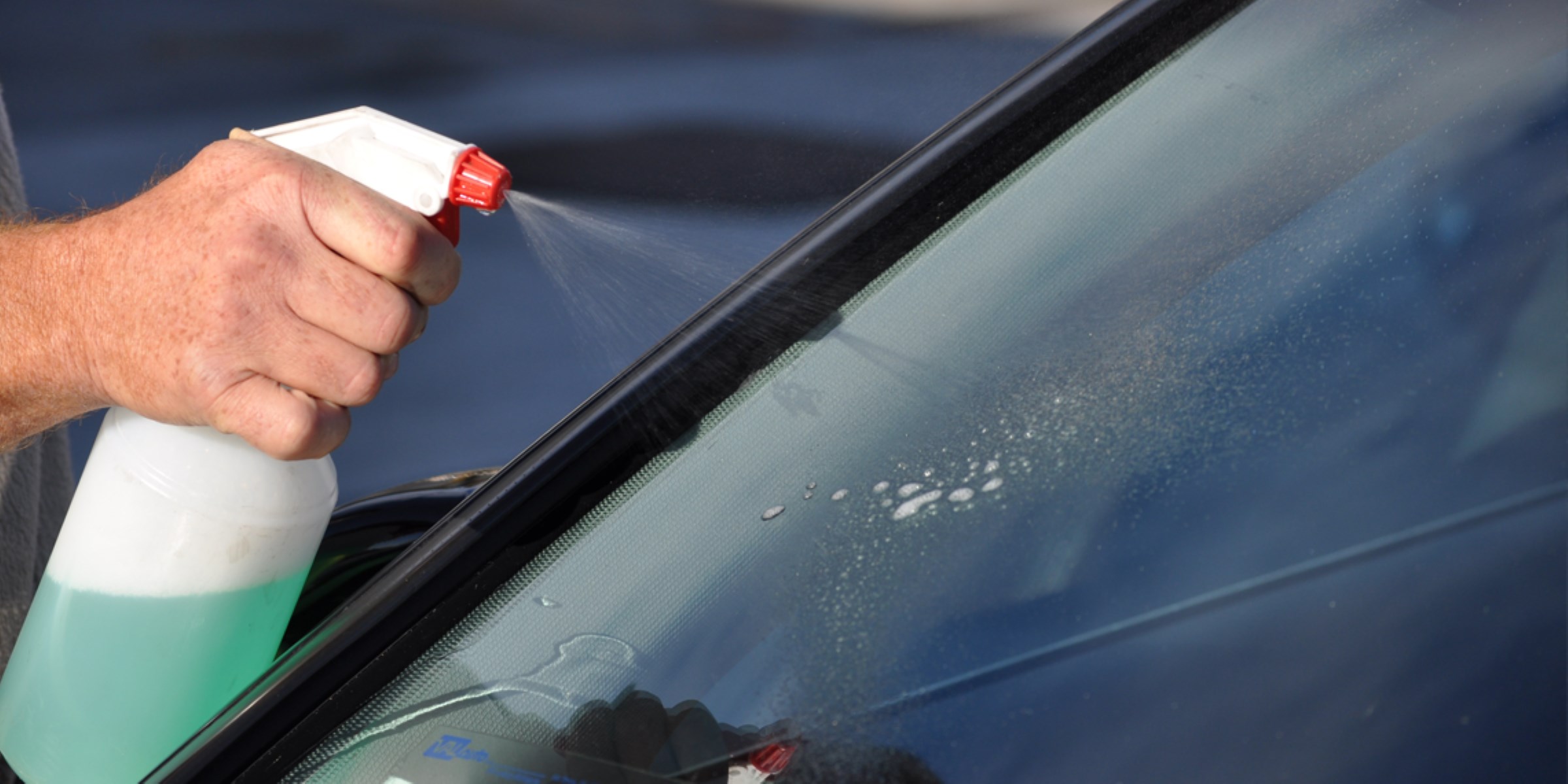
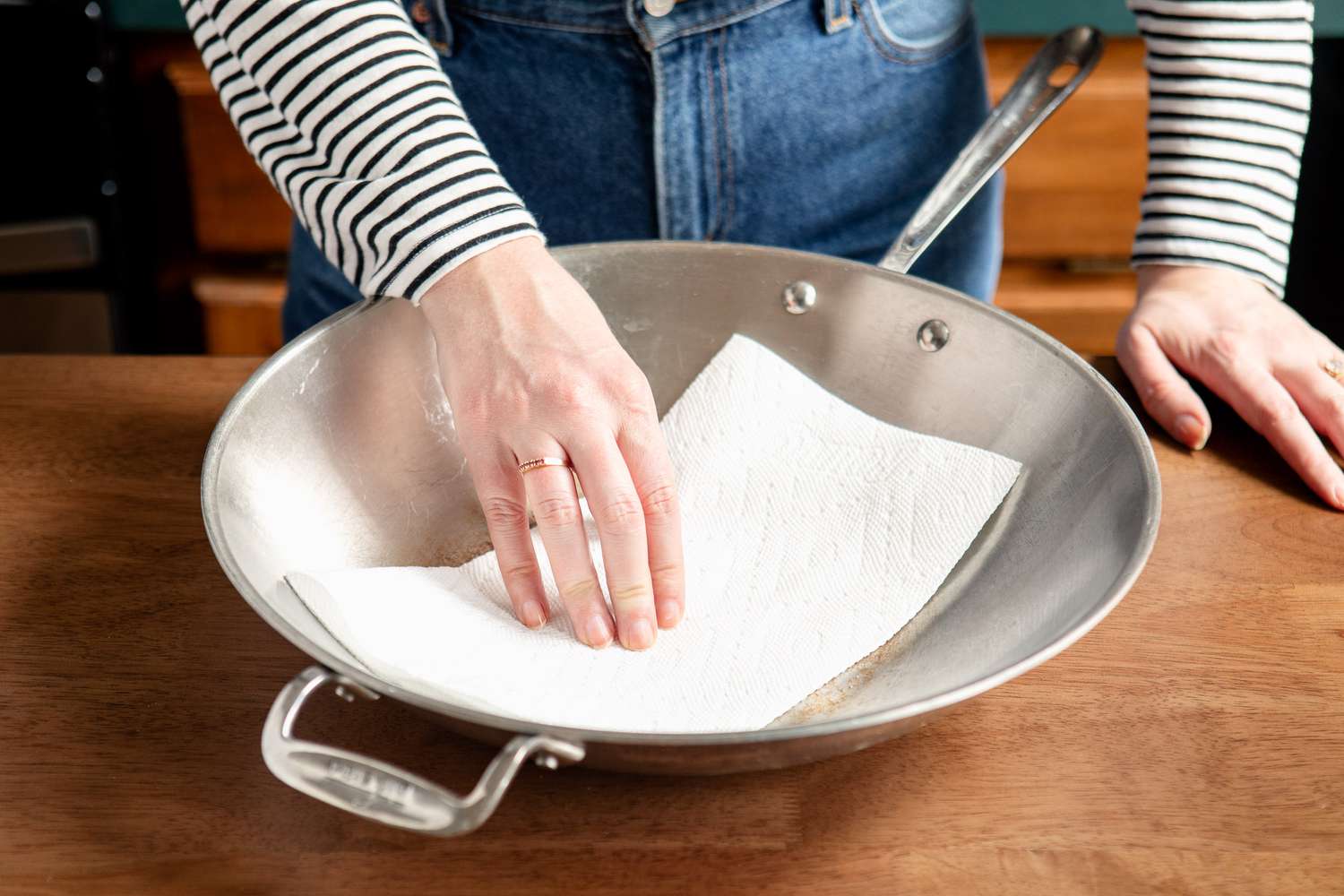

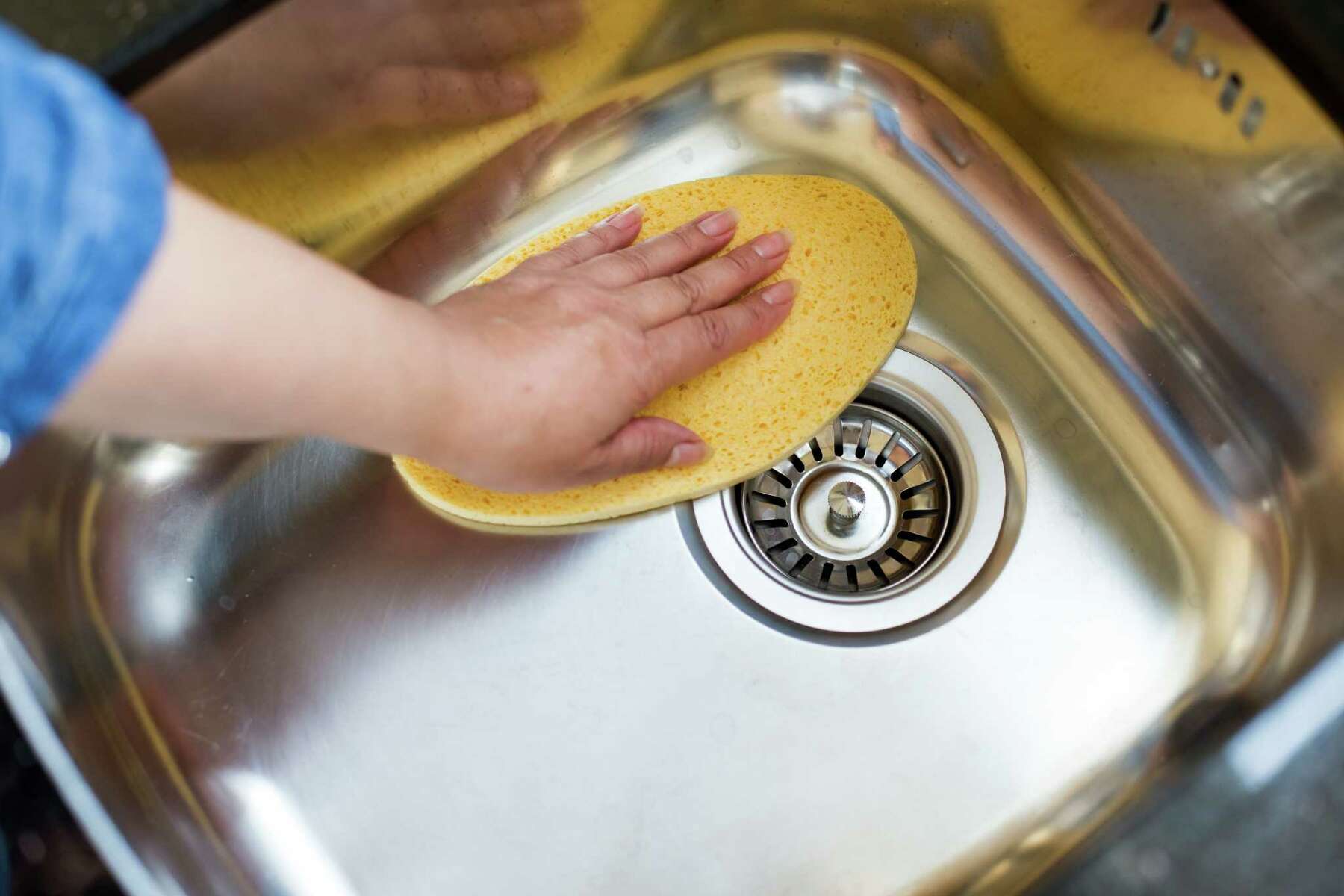
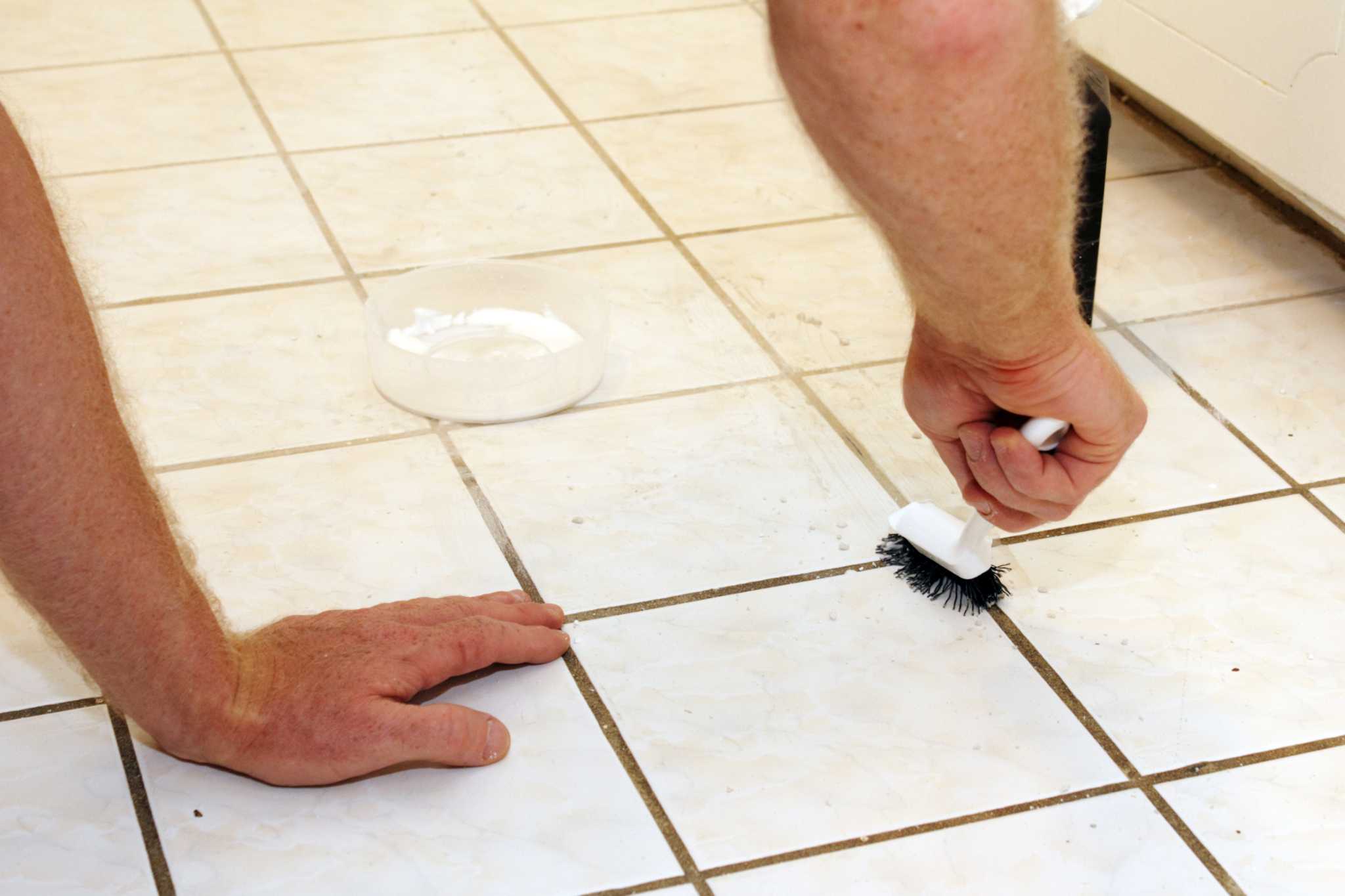
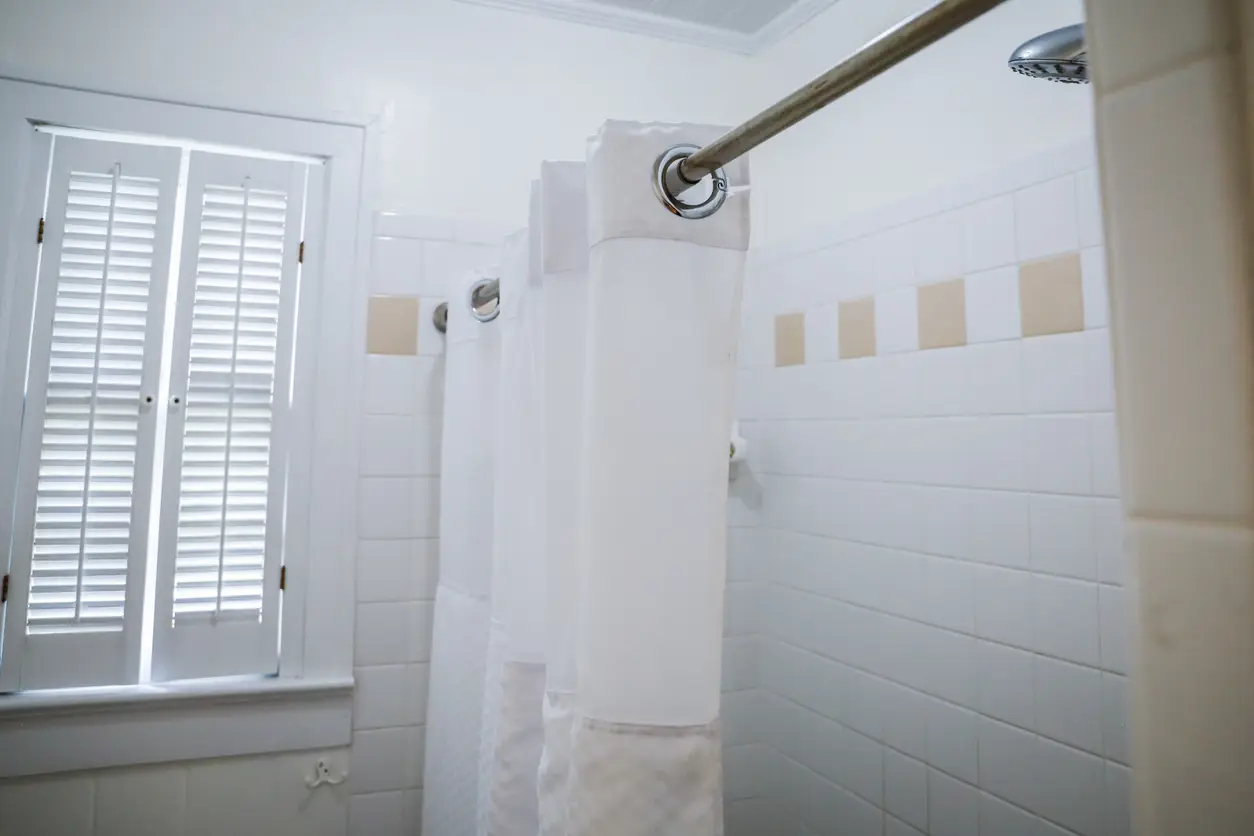

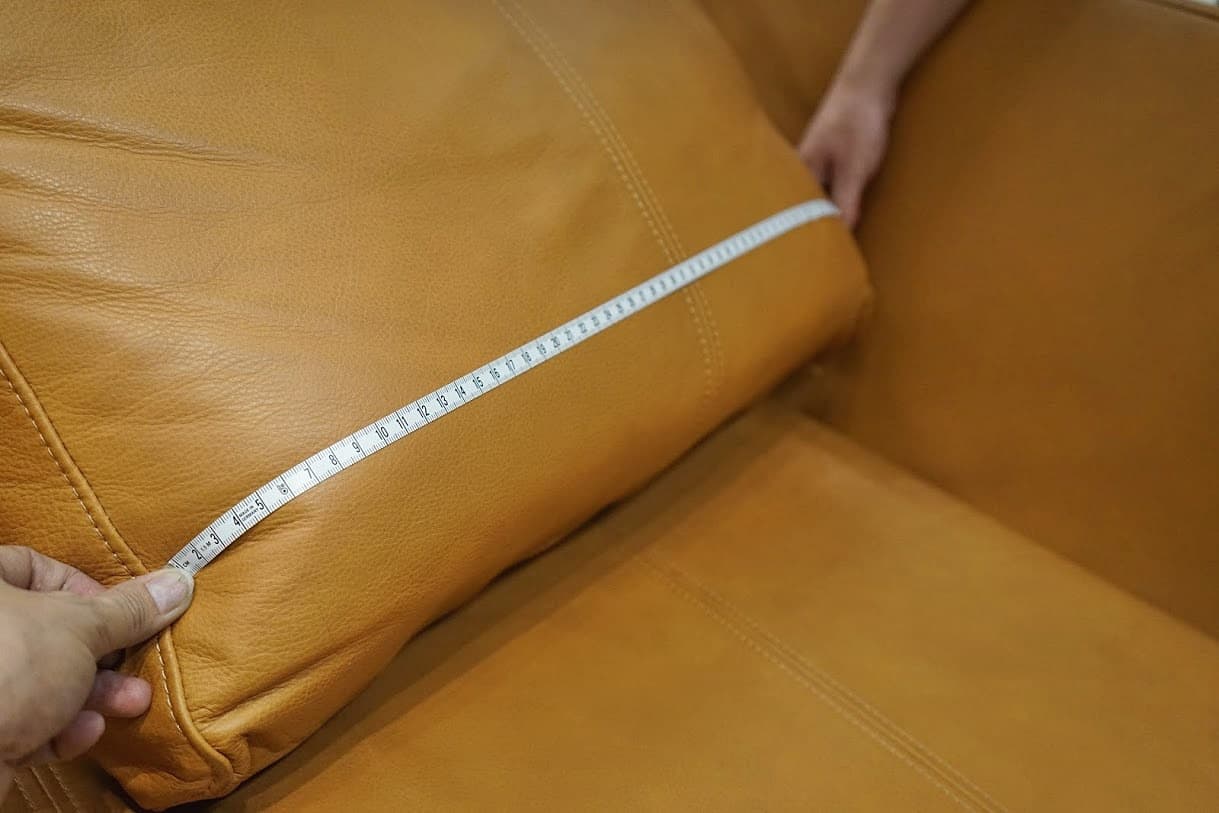

0 thoughts on “How To Remove Water Stains From Couch Cushions”